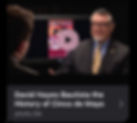PROGRAM MANAGER The Program Manager will oversee staff and manage the Institute of Museum and Library Services (IMLS) Grant and related projects or programs. The two-year grant aims to organize and digitize LRHS photos and documents for upload to an online archive. It will also support other LRHS initiatives and activities.





Help us continue the mission to preserve our
Raza history.Contributions are tax deductible to the extent allowed by law. La Raza Historical Society of Santa Clara Valley is a California Public Benefit Corporation (#3974355)and is an IRS § 501(c) (3) Public Charity Non-Profit Organization. Federal ID Tax # 81-3429366.

LRHS Video Interviews
on the RJ MARTINEZ Channel








Our Mission
Preserving la raza contributions
We collect and digitize articles, photographs, taped videos and oral histories of individuals and families who have long contributed to the prosperity of our region.
Availability of this information to academic researchers and others who are interested in knowing more about our Raza community
provides data about our community heroes, many of whom have never received civic recognition for their efforts in making
Santa Clara Valley what it is today.
Your Impact
Continued support to meet our goals
Your contributions help fund our projects with community-based affiliates like History San Jose, individuals, schools and other groups.
Our list of sponsors have allowed us to move forward with our major objectives and we are counting on you for your support.
















